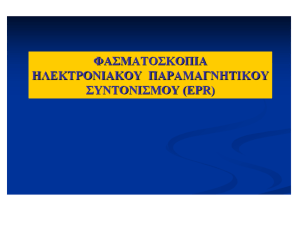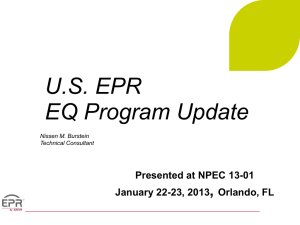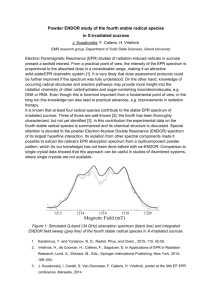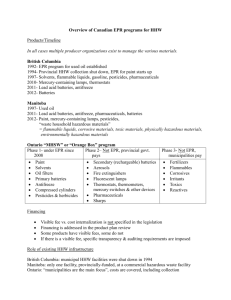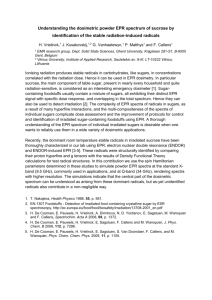Eruption processes of the 2005-06 volcanic episode at the East
advertisement
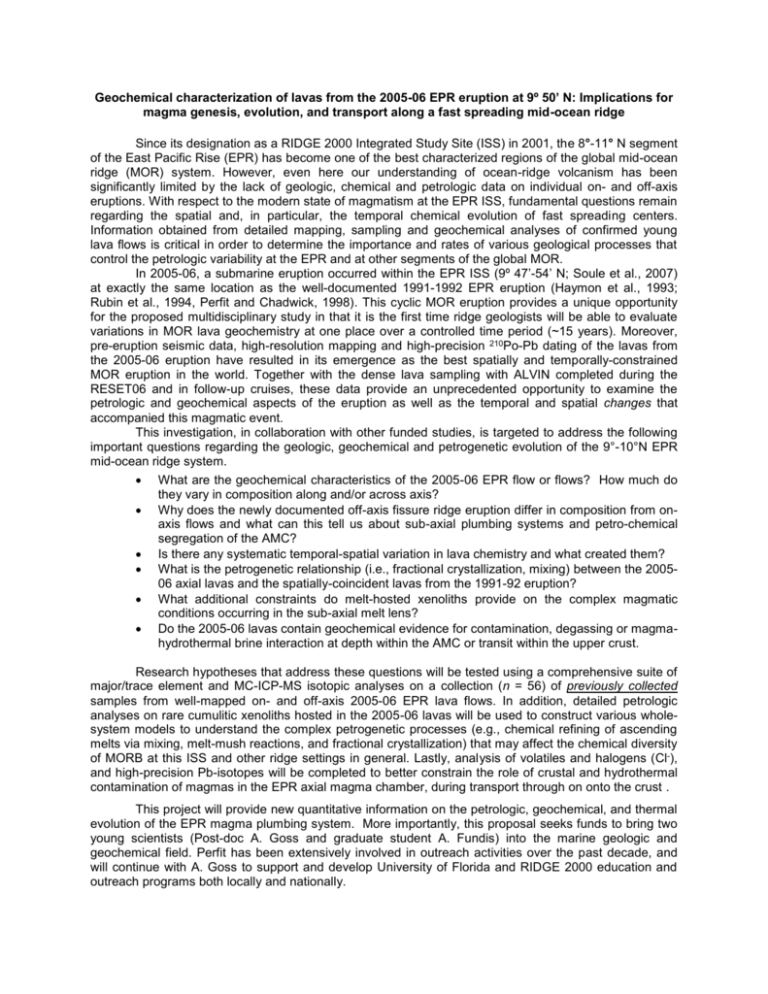
Geochemical characterization of lavas from the 2005-06 EPR eruption at 9º 50’ N: Implications for magma genesis, evolution, and transport along a fast spreading mid-ocean ridge Since its designation as a RIDGE 2000 Integrated Study Site (ISS) in 2001, the 8°-11° N segment of the East Pacific Rise (EPR) has become one of the best characterized regions of the global mid-ocean ridge (MOR) system. However, even here our understanding of ocean-ridge volcanism has been significantly limited by the lack of geologic, chemical and petrologic data on individual on- and off-axis eruptions. With respect to the modern state of magmatism at the EPR ISS, fundamental questions remain regarding the spatial and, in particular, the temporal chemical evolution of fast spreading centers. Information obtained from detailed mapping, sampling and geochemical analyses of confirmed young lava flows is critical in order to determine the importance and rates of various geological processes that control the petrologic variability at the EPR and at other segments of the global MOR. In 2005-06, a submarine eruption occurred within the EPR ISS (9º 47’-54’ N; Soule et al., 2007) at exactly the same location as the well-documented 1991-1992 EPR eruption (Haymon et al., 1993; Rubin et al., 1994, Perfit and Chadwick, 1998). This cyclic MOR eruption provides a unique opportunity for the proposed multidisciplinary study in that it is the first time ridge geologists will be able to evaluate variations in MOR lava geochemistry at one place over a controlled time period (~15 years). Moreover, pre-eruption seismic data, high-resolution mapping and high-precision 210Po-Pb dating of the lavas from the 2005-06 eruption have resulted in its emergence as the best spatially and temporally-constrained MOR eruption in the world. Together with the dense lava sampling with ALVIN completed during the RESET06 and in follow-up cruises, these data provide an unprecedented opportunity to examine the petrologic and geochemical aspects of the eruption as well as the temporal and spatial changes that accompanied this magmatic event. This investigation, in collaboration with other funded studies, is targeted to address the following important questions regarding the geologic, geochemical and petrogenetic evolution of the 9°-10°N EPR mid-ocean ridge system. What are the geochemical characteristics of the 2005-06 EPR flow or flows? How much do they vary in composition along and/or across axis? Why does the newly documented off-axis fissure ridge eruption differ in composition from onaxis flows and what can this tell us about sub-axial plumbing systems and petro-chemical segregation of the AMC? Is there any systematic temporal-spatial variation in lava chemistry and what created them? What is the petrogenetic relationship (i.e., fractional crystallization, mixing) between the 200506 axial lavas and the spatially-coincident lavas from the 1991-92 eruption? What additional constraints do melt-hosted xenoliths provide on the complex magmatic conditions occurring in the sub-axial melt lens? Do the 2005-06 lavas contain geochemical evidence for contamination, degassing or magmahydrothermal brine interaction at depth within the AMC or transit within the upper crust. Research hypotheses that address these questions will be tested using a comprehensive suite of major/trace element and MC-ICP-MS isotopic analyses on a collection (n = 56) of previously collected samples from well-mapped on- and off-axis 2005-06 EPR lava flows. In addition, detailed petrologic analyses on rare cumulitic xenoliths hosted in the 2005-06 lavas will be used to construct various wholesystem models to understand the complex petrogenetic processes (e.g., chemical refining of ascending melts via mixing, melt-mush reactions, and fractional crystallization) that may affect the chemical diversity of MORB at this ISS and other ridge settings in general. Lastly, analysis of volatiles and halogens (Cl-), and high-precision Pb-isotopes will be completed to better constrain the role of crustal and hydrothermal contamination of magmas in the EPR axial magma chamber, during transport through on onto the crust . This project will provide new quantitative information on the petrologic, geochemical, and thermal evolution of the EPR magma plumbing system. More importantly, this proposal seeks funds to bring two young scientists (Post-doc A. Goss and graduate student A. Fundis) into the marine geologic and geochemical field. Perfit has been extensively involved in outreach activities over the past decade, and will continue with A. Goss to support and develop University of Florida and RIDGE 2000 education and outreach programs both locally and nationally.

